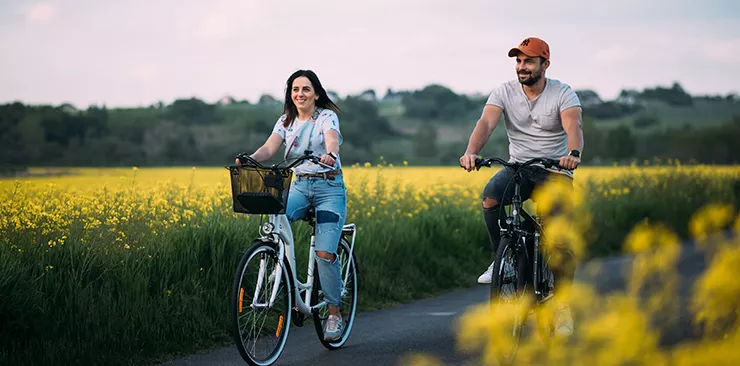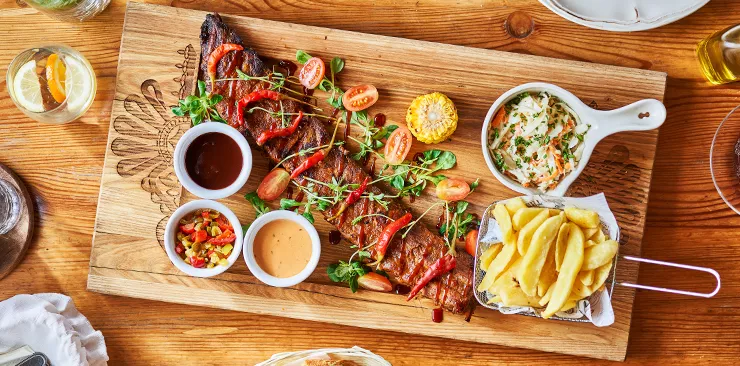





Tradition Must Flow!
Let yourself be attracted to the world of the Polish Highlanders and embark on a cultural and culinary journey unlike any other. Nestled amidst the majestic Tatra Mountains, Zakopane welcomes you to explore the vibrant culture of Górale: the Polish Highlanders. With its unique architecture, rich customs, traditional costumes, and mouth-watering albeit simple cuisine, this enchanting town offers a captivating experience that will leave you mesmerised.

Górale, the Polish Highlanders, enjoy a distinctive identity as they have preserved their rich cultural heritage since their sheepherding forefathers arrived at the foot of the rocky Tatra Mountains from Transylvania many centuries ago. Visiting Podhale, the area around Zakopane, you can discover this extraordinary people and admire their captivating traditions. The wooden houses adorned with intricate carvings illustrate the remarkable Highlander craftsmanship.
Walking among those, you are likely to run into Highlanders wearing their traditional costume – a vibrant reflection of their cultural pride. The men’s costume includes the intricately embroidered cuchy – men’s jackets and felt trousers with the characteristic motif of parzenica on the thighs, and the women’s colourful headscarves are a spectacle to watch, especially when they dance to the lively rhythms of traditional music.
Speaking of music and dance, they are precisely the arts that the Górale are most closely associated with throughout the country, and the tradition of music-making goes on continued by such bands as Trebunie-Tutki and Śleboda.
The customs and the rich folk music and dance traditions can best be gleaned during numerous festivals, e.g. the International Festival of Highland Folklore, a vibrant celebration of Polish Highlander culture. It offers competitions, where shepherds demonstrate their skills in herding and cheese making, each occasion offering a glimpse into their deep-rooted traditions.
They are also an opportunity to indulge in the flavours of Polish Highlander cuisine, known both for its nutritive value and taste. Many of their products have earned European accolade and quality marks. Oscypek, the most famous among their number, is a smoked savoury hard cheese made from sheep milk, while the delicious bryndza is a cottage cheese spread. Although not on the list, make sure you’ve tasted kwaśnica, a hearty sauerkraut soup with assorted cuts of meat. An even richer taste comes with “the hunter’s stew” that is bigos, a thicker version of the previous dish.
If the Polish Górale bring to mind associations with Dune’s Fremen, it’s not far off. Their captivating culture has thrived amidst stunning landscapes and challenging conditions, hiding hospitality, warmth, and a kind heart beneath the tough exterior. Come and witness for yourself! And yes, they do have blue eyes!
The distinctive Zakopane style was in fact developed by the Polish intelligentsia who flocked to the town in large numbers in the late 19th and early 20th centuries. They drew ample inspiration from the Highlander architectural traditions, and blended their knowledge of contemporary architecture with abundant elements of Highlander ornamentation, producing a truly captivating aesthetic. While Poland was divided by neighbouring empires and later, when Poland was reborn in the wake of the First World War, the Zakopane style emerged as a symbol of the nation’s resilience and ingenuity, gaining widespread popularity and becoming recognised as a Polish national style.
In the past, Highlanders only wore their full regalia to church on Sunday and to assorted special occasions that required showing off, such as dance parties, and the daily garb of the people working hard in harsh climate had to be much simpler. Little wonder they are eager to don their Sunday bests more often.








